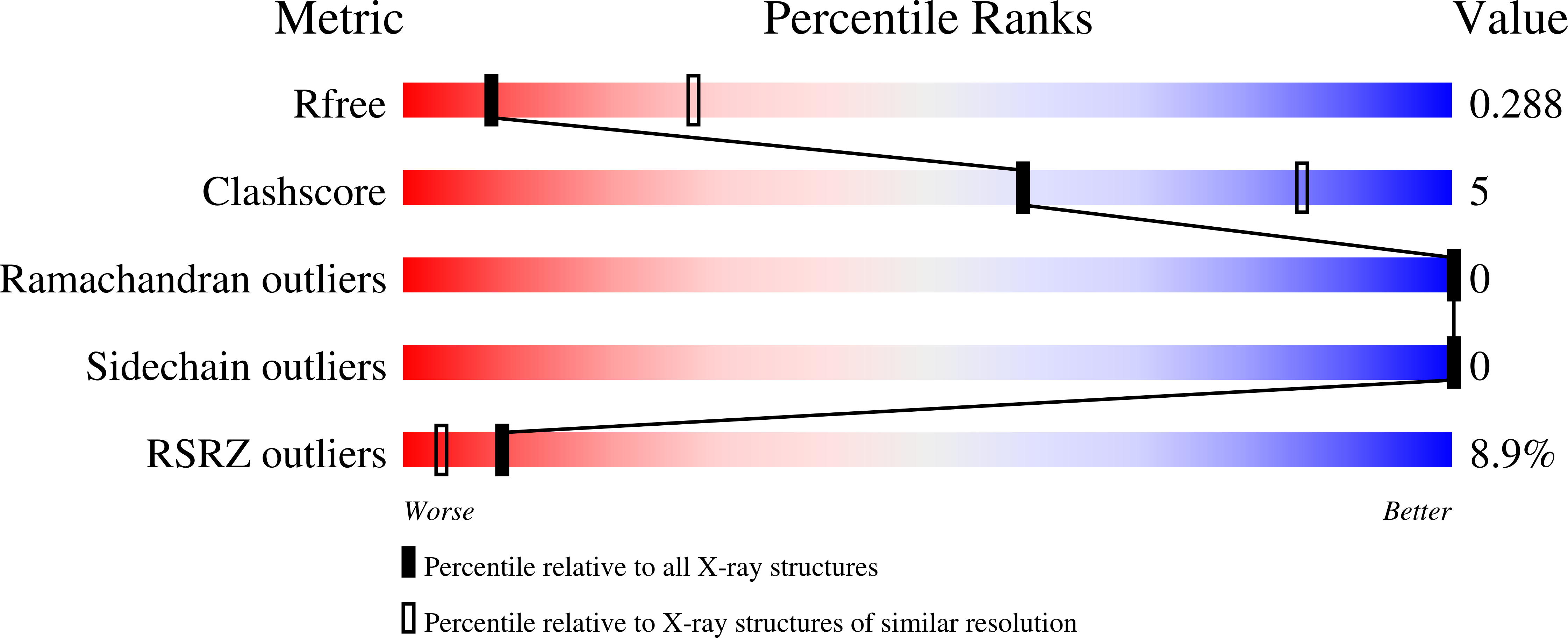GlcNAc-1-P-transferase-tunicamycin complex structure reveals basis for inhibition of N-glycosylation.
Yoo, J., Mashalidis, E.H., Kuk, A.C.Y., Yamamoto, K., Kaeser, B., Ichikawa, S., Lee, S.Y.(2018) Nat Struct Mol Biol 25: 217-224
- PubMed: 29459785
- DOI: https://doi.org/10.1038/s41594-018-0031-y
- Primary Citation of Related Structures:
6BW5, 6BW6 - PubMed Abstract:
N-linked glycosylation is a predominant post-translational modification of protein in eukaryotes, and its dysregulation is the etiology of several human disorders. The enzyme UDP-N-acetylglucosamine:dolichyl-phosphate N-acetylglucosaminephosphotransferase (GlcNAc-1-P-transferase or GPT) catalyzes the first and committed step of N-linked glycosylation in the endoplasmic reticulum membrane, and it is the target of the natural product tunicamycin. Tunicamycin has potent antibacterial activity, inhibiting the bacterial cell wall synthesis enzyme MraY, but its usefulness as an antibiotic is limited by off-target inhibition of human GPT. Our understanding of how tunicamycin inhibits N-linked glycosylation and efforts to selectively target MraY are hampered by a lack of structural information. Here we present crystal structures of human GPT in complex with tunicamycin. Structural and functional analyses reveal the difference between GPT and MraY in their mechanisms of inhibition by tunicamycin. We demonstrate that this difference could be exploited to design MraY-specific inhibitors as potential antibiotics.
Organizational Affiliation:
Department of Biochemistry, Duke University Medical Center, Durham, NC, USA.
















